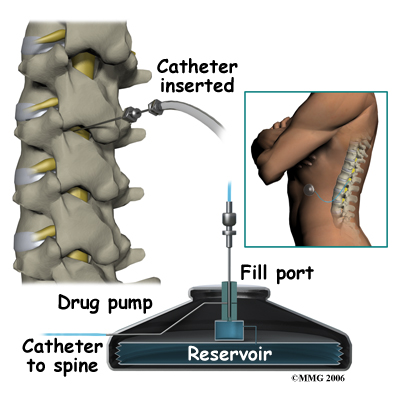Pain is one of the most common reasons patients visit their doctors. If pain persists it not only can cause physical disability, but also place emotional, economic, psychological strain on patients and their families. Chronic pain is exceedingly prevalent. A variety of international studies have estimated that between 10.1%-55.2% of population are afflicted with pain. In addition, pain is present in 67% of patients with metastatic cancer.
Medication, the first step for chronic pain
Medication is often the first therapy that doctors use to manage chronic pain. Each patient will have a unique response to any medication, so your doctor will usually need to try a variety of drugs and dosages to find the most effective combination. Your treatment will depend on the type and severity of your pain, along with how well your pain responds to that treatment.
Some drugs will have a more profound effect if they are injected close to the site of your pain or close to the course of the nerves that conduct the pain sensation. These drugs are referred to as nerve blocks.
Sometimes your doctor will need to leave a plastic tube (catheter) in the area to allow easy follow-up administration of the medicine. If prolonged pain management is required, the catheter may be connected to a small pump and the entire device implanted under your skin. This therapy is known as intrathecal drug delivery (IDD).
The spinal cord is like a highway for pain signals traveling to the brain. Because intrathecal drug delivery delivers medicine directly to where your pain signals travel, IDD can control your pain with a fraction of the medicine that would be required for systemic delivery. With lower doses, the side effects associated with any oral medications can be greatly reduced.
IDD allows your pain medication to be delivered directly into the intrathecal space (where fluid flows around the spinal cord) though a small, soft catheter.
Targeted drug delivery applications
People with certain kinds of chronic pain may be candidates for IDD therapy. A pump can help lessen chronic pain caused by:
- Failed back surgery syndrome
- Cancer pain
- Reflex sympathetic dystrophy
- Causalgia: a burning pain caused by peripheral nerve injury.
- Arachnoiditis: painful inflammation and scarring of the meninges (protective layers) of the spinal nerves.
- Chronic pancreatitis: chronic abdominal pain caused by inflammation or blockage of the pancreatic duct.
About the drug delivery system

Unlike medications that circulate throughout your body in your bloodstream, drug delivery therapy releases medication directly into the fluid surrounding your spinal cord which may lead to fewer or more tolerable drug side effects.
The system consists of a pump and catheter, both of which are surgically placed under the skin. The pump is a round device that stores and delivers pain medication. It is placed in your abdomen. The catheter (a thin, flexible tube) is inserted into your spine and connected to the pump.
Determining whether an implantable drug pump will be a good pain management option for you is a complex process. It requires a team of specialists and a thorough evaluation of your state of health.
References
http://www.medtronicneuro.com.au/
http://www.ncbi.nlm.nih.gov//
https://www.medtronic.com//
http://backandneck.about.com/
http://www.mayfieldclinic.com/







